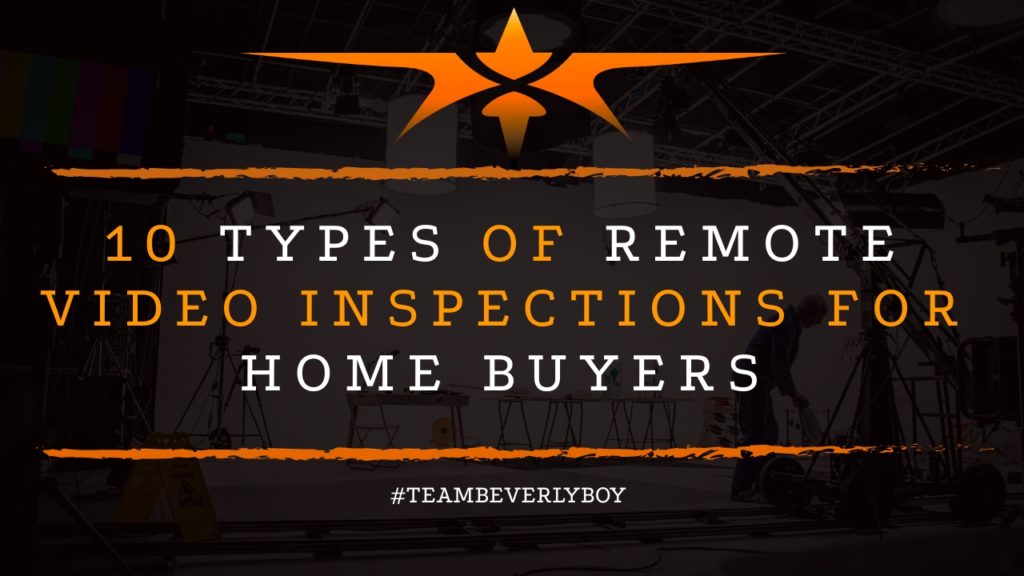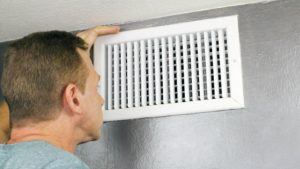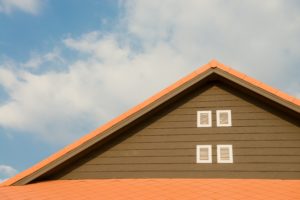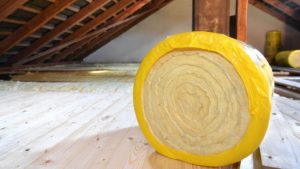
10 Types of Remote Video Inspections for Home Buyers
Remote video inspections represent the changing times as we shift toward digital, remote interactions rather than face-to-face contact. COVID-19 and the closing of many economies nationwide resulted in a hard shift toward remote video inspections for home buyers seeking to move forward with home purchase decisions. Fortunately, there are many different types of inspections that can be performed remotely. In fact, much like an in-person inspection, remote video inspections for home buyers include insight into the features and foundations that make up the home both externally and internally as follows.

Get a video inspection quote here!
#1. Remote HVAC Inspections
Inspecting the HVAC unit to ensure it is functioning properly and that there are no major damages to the housing or heat and air delivery system is vital to new home or existing home buyers.
Remote video inspections of the HVAC system can determine whether there is any existing major damage to the unit but certain things may not be easy to determine from a remote inspection such as presence of internal damage or smells that would be noticed by an in-person inspector.
These are important to keep in mind if you choose remote video inspection services.

#2. Remote Video Inspections of the Roof
The roof structure is something that can rather easily be monitored or inspected from a remote location as cameras simply view the structure from above and, when possible, from within the attic to make a determination as to how secure the unit is.
Remote video inspections of the room involve a focus on shingles and the placement of roofing elements to ensure everything is structurally sound. From inside the attic a remote video inspection can determine the presence of roof leaks or other damage.

#3. Interior Plumbing & Electrical Inspections
Although certain features of the interior plumbing and electrical wiring may be difficult to determine from a remote video inspection there are plenty of features that the inspection can recognize.
For example, remote video inspections of electrical wiring can distinguish whether there are faulty wires or those that should be changed due to old age or wear. Likewise, a remote inspection of the plumbing can be used to determine instances of early failure or potential needs for improvement.

#4. Attic & Visible Insulation Inspections
Remote video inspections of the attic and ventilation can be performed with ease. Additionally, inspections of the visible insulation within the attic can be performed by a remote inspector.
Because these are primarily visual inspections that are easily represented on camera, both of these types of pre-purchase inspections are ideally conducted by a remote video inspector with the assistance of an on-site camera crew or cameraman.
Detailed data on the depth of insulation or the ventilation can be further defined with additional interactions via the camera such as holding a tape measure into the insulation area to determine thickness and depth.

#5. Remote Video Inspections of Walls & Ceilings
Remote video inspections of the walls and ceilings help home buyers to understand the structure of the property they are considering for purchase.
Because these inspections generally look for discoloration of the walls or ceilings as a sign of damage, a camera is the perfect tool for the inspection process. Likewise, remote video inspections of this sort can visibly see damage such as holes or texture that require improvement.
Unfortunately, remote video inspections cannot smell the way an in-person inspector can. Therefore it is possible for remote inspections to overlook dampness to drywall or walls that could be a sign of a plumbing leak or external leak of some sort which would require further maintenance.
This is something important to consider if you choose remote video inspections for the walls or ceilings of a home.

#6. Remote Inspections of the Floors
Inspecting the floors from a remote video view can be tricky. An in-person inspector can feel the way their weight balances as they walk across a floor. If there is any type of movement or imbalance within the floor, the remote video inspector will likely miss it.
However, most inspections of the floor focus on whether the carpet or hard-surface flooring are in-tact and what type of condition they are in. Visually, these inspections can take place with a camera.
If there are original hardwood floors, or if there is known evidence of underlying bare floor, an inspection by an in-person inspector may be valuable.

#7. Inspecting Windows & Doors Remotely
A remote inspection of the windows and doors of a home or building can easily take place. Remote video inspections capture visible imagery of the windows and can easily see if they are up to date, built with care, and intact. The same is true for a door.
However, remote video inspections cannot easily notice a draft that comes from poorly insulated windows. When considering remote video inspections of a home for purchase, make sure you diligently inspect the age of windows and doors to ensure they are properly insulated and not drafty or otherwise in need of repair.

#8. Foundation Inspections
The foundation of the home is difficult to inspect from a remote standpoint and problems may not be easily recognized. Remote video inspections for foundation problems may include looking at cracks in walls or the sides of the home, settling of the slab, or evidence of things like doors sticking.
Unfortunately, a video may not show a sticky door or shifty window that would be evident of a potential foundation problem.
If you consider remote video inspections for your home, make sure that you are aware of the potential dangers in foundation problems and that you have an unbiased individual perform the remote video inspection for you.
It is also a good idea to have the inspector open and close doors on video so that you can visibly see whether they are any issues which may signify a foundation problem.

#9. Virtual Basement Inspections
Remote video inspections of the basement consist of determining the level to which the basement has been constructed and whether there is any evident damage to the area.
If the basement is finished, the inspection will likely check for cracks or leaks in the walls, mold, and or the presence of rodents or other pests.
Remote video inspections cannot smell the basement which is unfortunate as the smell is a quick way of knowing whether there is evident moisture in the room.
Consider this potential downfall if the home you’re purchasing has a basement and you’re considering a remote video inspection before the purchase takes place.

#10. Remote Video Inspections of Structural Components
The structure of your home is vital. Remote video inspections can detect certain structural risks by visibly noticing changes in roof alignment, cracks in the walls, or damage to concrete.
Roof leaks, wall or ceiling cracks, and changes in the floor structure are also potential signs of structural damage to a home. Remote video inspections of a home should include careful consideration to view the flooring, ceiling, walls, doors and exterior as well as the roof.
A close inspection of all of these features can help the inspector to see whether there is potential structural damage to the home or not. Need help creating remote video inspections required to sell your home? Give Beverly Boy Productions a call today.
We’ll put a crew to work in producing a top quality remote video inspection that you can send to the inspector for final delivery to the purchaser of your home to put minds at ease. We cannot wait to help you out!


